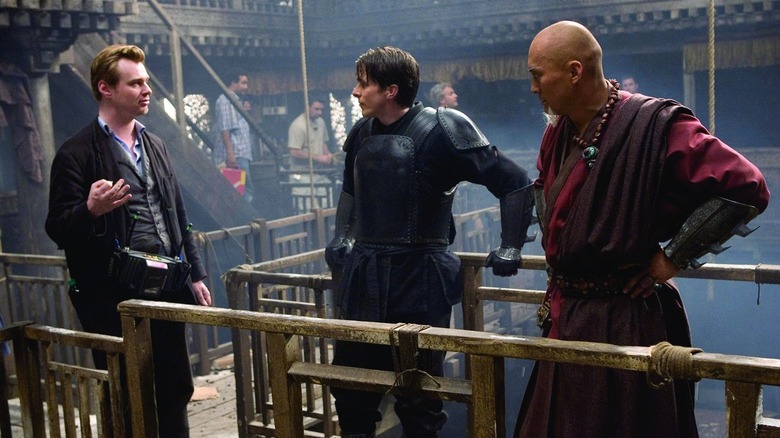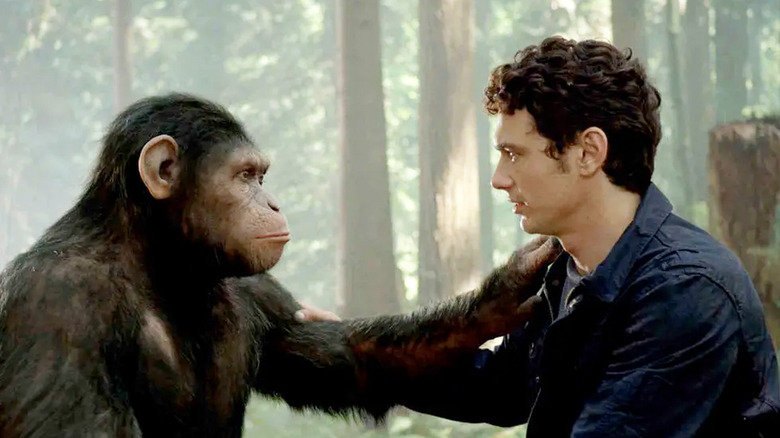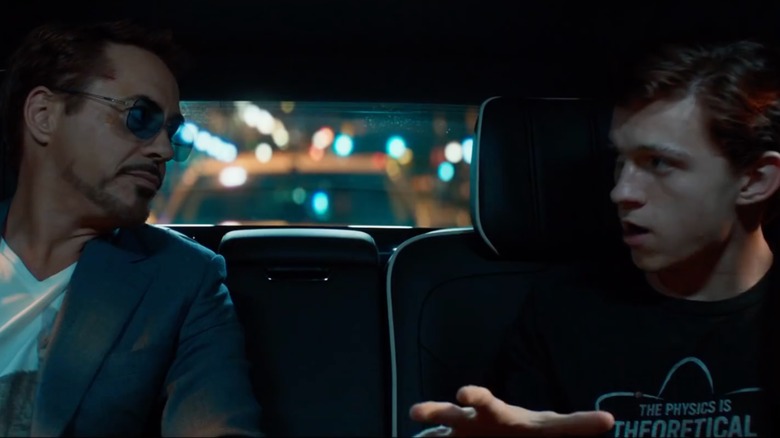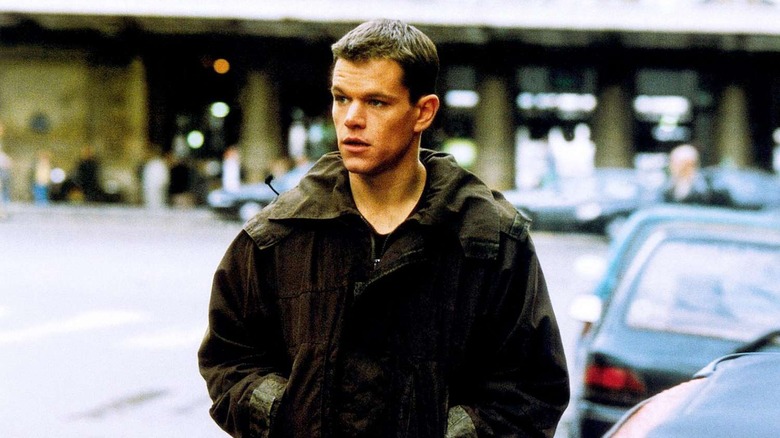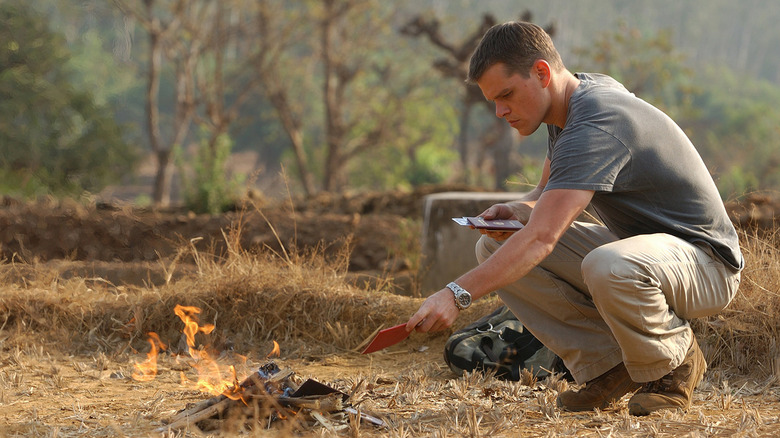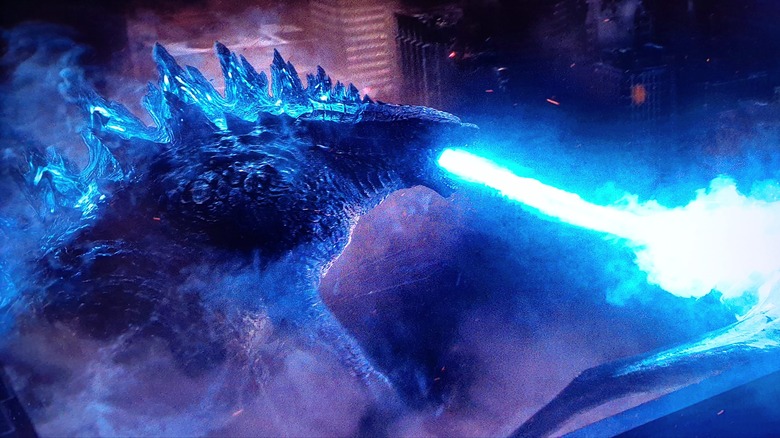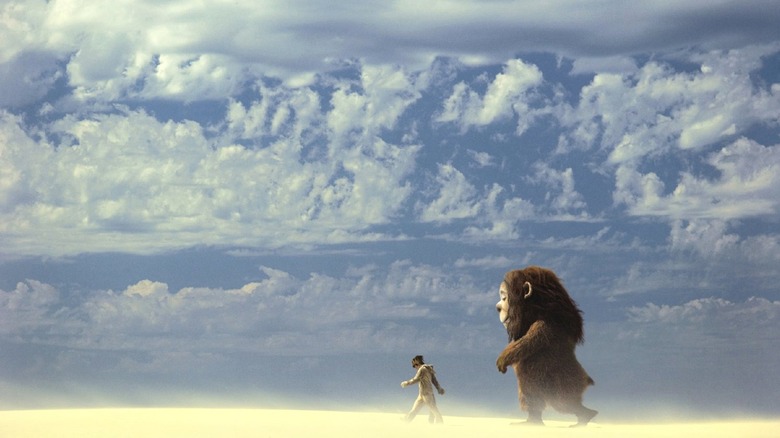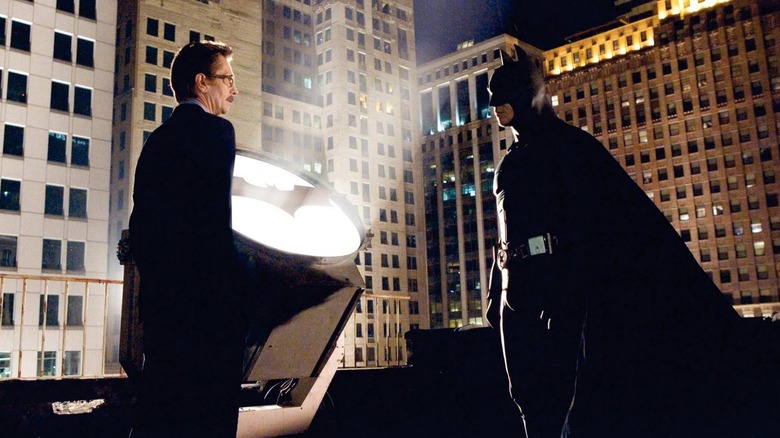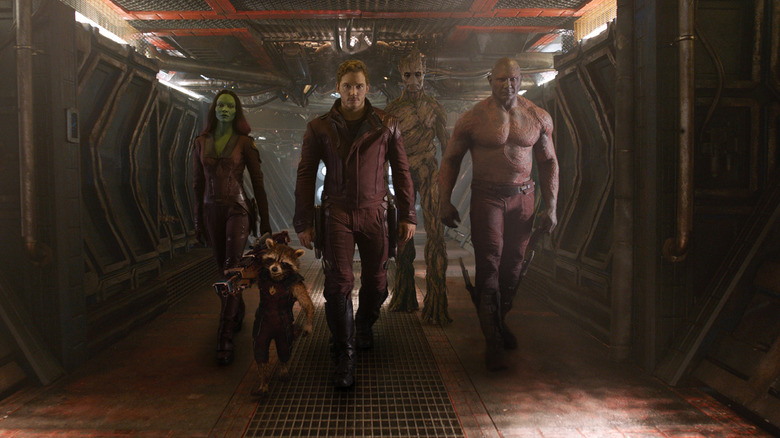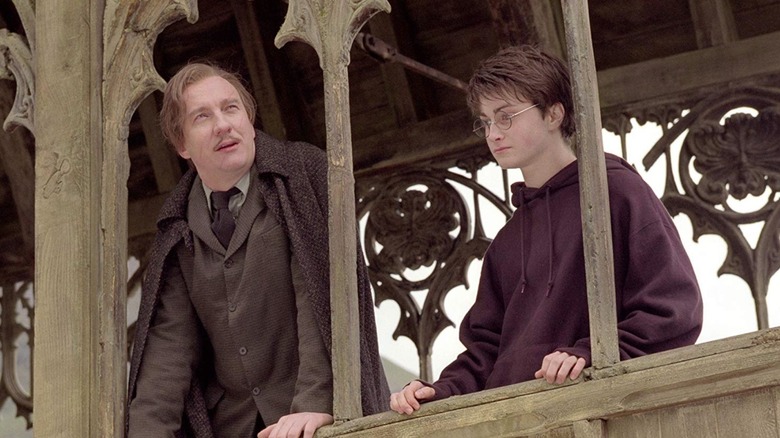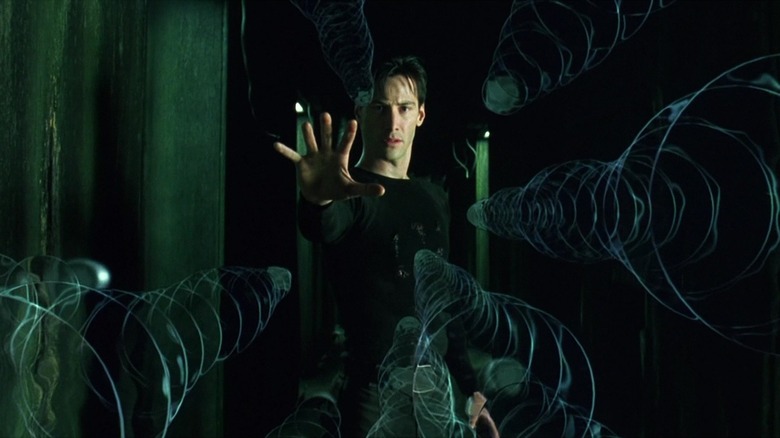The 10 Best Blockbusters From Indie Directors, Ranked
In the last couple decades, it's been as safe to assume that big-budget blockbusters arrive almost every week as it is to assume that many of the people directing those films aren't very big names. The days of directors like Steven Spielberg or Tony Scott or Michael Bay regularly directing blockbusters have mostly gone by the wayside. More often than not, studios have passed their big-deal intellectual property titles to filmmakers who aren't household names, perhaps hoping that they'll hew to the company line instead of injecting their own personal flair into the proceedings.
For instance, 2024 marked the arrival of one such film, the Universal Pictures/Warner Bros. Pictures film "Twisters," which serves as a long-awaited sequel (kind of) to the 1996 blockbuster "Twister." It also serves as the first film for director Lee Isaac Chung since his Oscar-winning 2020 indie family drama "Minari." Chung's past feature work doesn't suggest he'd be the first choice to make a big, special-effects extravaganza about the power of tornadoes, but there are plenty of filmmakers who've made the jump from indies to blockbusters and done so quite well. Although "Twisters" has some enjoyable aspects, including a deliriously charismatic performance from Glen Powell, it's not enough to crack a ranking of the 10 best blockbusters from indie directors. Let's get to the ranking!
10. Rise of the Planet of the Apes (Rupert Wyatt)
When we think now of the modern rendition of "Planet of the Apes," we probably first think of the masterful work done by Andy Serkis as well as the many motion-capture gurus who helped bring Caesar the ape to life. But the 2011 revival of the well-known franchise was helmed by Rupert Wyatt, who was fresh off a low-budget British drama, "The Escapist." Rebooting a series that's as well known now for the jaw-dropping twist ending of the 1968 film in which our hero realizes he's been on an ape-led Earth the whole time, as it is for the head-scratching ending of Tim Burton's remake, was a dangerous challenge for any filmmaker. But the combined efforts of Wyatt, Serkis, the folks at Weta, and many others made this film the first in a now-long-running revived franchise that just had its most recent entry, "Kingdom of the Planet of the Apes," perform reasonably well at the 2024 summer box office.
The 2011 film has more modest aims in mind, essentially establishing a barely-distant future that serves as the beginning of a world in which apes would reign supreme over humans, as opposed to depicting the more futuristic vision that was evident from the original series. Aside from Serkis' brilliant work, Wyatt got solid performances from James Franco, John Lithgow, Freida Pinto, Tom Felton, and others, carefully balancing a serious-minded drama with the audience awareness that apes like Caesar would one day take over the planet for themselves.
9. Spider-Man: Homecoming (Jon Watts)
The Marvel Cinematic Universe is full of filmmakers who either came primarily from the world of TV (think of Anthony and Joe Russo, who worked on shows like "Arrested Development" and "Community") or who had made a small name for themselves from indie fare. Jon Watts is from that latter camp, having directed the Sundance favorite "Cop Car" and the horror film "Clown" before making the leap to the MCU. Though his final Spider-Man movie, "No Way Home," is among the biggest box-office successes ever released, it was his initial entry, the 2017 title "Spider-Man: Homecoming," that helped cement him as a blockbuster filmmaker to watch.
Though "Homecoming" was not our true introduction to Tom Holland's version of Peter Parker, Watts took the same live-wire energy from "Cop Car" and infused it into the bigger-budget story in which a high-school-aged Peter grapples with his secret superpowers, his friendship with Tony Stark, and being a teenager whose girlfriend's dad is also a supervillain. "Homecoming" boasts the single best scene in the Holland-era Spidey movies, as Peter has a conversation with Adrian Toomes (Michael Keaton) that starts as a play on the rules for safely dating Toomes' daughter and turns once our hero realizes Toomes is the villain known as The Vulture. The nervy edginess of this scene hasn't since been matched, but allowed Watts to craft suspense without relying on special effects, something he did quite memorably.
8. The Bourne Identity (Doug Liman)
With some of the filmmakers on this list, you can see their earlier work and understand how they were able to effectively make the leap to blockbusters. For Doug Liman, it's still fairly surprising. Though the 2002 adaptation of "The Bourne Identity" was Liman's fourth film, his early films were small indies, like the cult favorites "Swingers" and "Go," both of which are dialogue-heavy and character-driven in ways that "The Bourne Identity" simply isn't. ("Go," especially, feels heavily indebted to the works of Quentin Tarantino, a big-name director but not a blockbuster filmmaker.) But while Liman may not have previously flexed an obvious action-centric focus, that's largely become his style now.
Though Liman wouldn't direct the other Bourne films in the franchise (we'll get to the director who did shortly), he's moved on to helm action films like "Mr. & Mrs. Smith," "Jumper," and the Tom Cruise-starring "Edge of Tomorrow." "The Bourne Identity" almost feels like Liman daring himself to do the opposite of his past work, since when we meet Jason Bourne, he's overcoming a case of amnesia and is a far less verbal character than those from either "Swingers" or "Go." Just as Matt Damon felt like he was embracing a new role as an action hero here, so too did Liman comfortably reveal his action-movie chops with this solid spy thriller.
7. The Bourne Supremacy (Paul Greengrass)
"The Bourne Identity" was enough of a hit to garner a few different sequels, three of which starred Matt Damon and were also directed by Paul Greengrass. (Let's all just pretend "The Bourne Legacy" didn't happen.) Greengrass had never worked on a big studio project prior to the 2004 film "The Bourne Supremacy," in which Jason Bourne continued to try and understand his past life while also taking on large swaths of dudes trying to kill him.
What made "The Bourne Supremacy" stand out beyond other action films of the early 2000s was what Greengrass brought to the table: an often shaky, jittery camera, a style that he brought over from his prior works, documentary-style dramas like the excellent "Bloody Sunday." (Before becoming a filmmaker, Greengrass had also worked as a journalist, with a verite style that effectively crossed mediums.) Certainly shaky-cam-style action filmmaking was not new to Hollywood, considering how effectively Steven Spielberg utilized the technique in the D-Day section of "Saving Private Ryan" in the late '90s. But with "The Bourne Supremacy," Greengrass was able to adopt a similar style through propulsive fights and car chases in ways that felt fresh and new, completely redefining not just Bourne, but plenty of other action films that use shaky-cam but rarely as well as in one of Greengrass's "Bourne" movies.
6. Godzilla (Gareth Edwards)
The 2014 revival of "Godzilla" is one of the most effective, haunting, and terrifying sci-fi films of recent memory, largely because director Gareth Edwards did an amazing job of emphasizing the mammoth scale of the eponymous monster relative to the people who come in contact with the big lizard. Edwards didn't have a massive resume to boast at the time — prior to this film, he'd directed the very low-budget genre film "Monsters," co-starring Scoot McNairy. Where "Monsters" had a reported budget of just $500,000, "Godzilla" had a budget to match its massive title character.
It would have been easy to envision this serving as a cautionary tale for studios, so that they don't always bring up a relatively untested filmmaker to handle such a large (in more ways than one) property. But Edwards proved himself an extremely gifted young director with "Godzilla," often elevating the script to a point where the David-vs.-Goliath-style fight between humans and Godzilla took on a genuinely epic, almost operatic quality. It was no surprise that he quickly moved to the world of Lucasfilm with "Rogue One: A Star Wars Story," because Edwards proved himself more than worthy here. The flip side is that Edwards hasn't yet revisited the same creative heights as he did with "Godzilla," but for at least this one movie, he deserved to be considered among the best young filmmakers of his generation.
5. Where the Wild Things Are (Spike Jonze)
While it's true that the 2009 adaptation of Maurice Sendak's beloved children's book "Where the Wild Things Are" is not the same type of big-budget affair as an action movie or a sci-fi thriller, it still was a large jump up for the distinctive and quirky filmmaker Spike Jonze. He'd already made two brilliant films, "Being John Malkovich" and "Adaptation.", but neither of those titles (nor his producing work with the "Jackass" films) suggested that he had the tender, spiky, and complex take on Sendak's work in him.
That's especially true because the film, written by novelist Dave Eggers, does boast a fair bit of special effects work so that the wild things themselves can believably come to life once the troubled young Max (Max Records) takes a journey from his suburban neighborhood to the mysterious land where the wild things are. "Where the Wild Things Are" is bigger and odder than most mainstream fare with a budget of $100 million (though it's arguably the least weird of Jonze's films), but it showed how comfortable the director was with a bigger set of purse-strings, and paved the way for another large-scale drama a few years later in the form of his swooning sci-fi romance "Her."
4. Batman Begins (Christopher Nolan)
Arguably the most important film in Christopher Nolan's filmography wasn't "Batman Begins," but the film he made before it, the underrated 2002 crime drama "Insomnia." That movie enabled the young Nolan to work with legendary actors like Robin Williams and Al Pacino, but it was a modestly budgeted remake of a Swedish thriller, this time set in Alaska. The real blockbuster jump for Nolan came with "Batman Begins," which would have been a risky project no matter who directed it. The last time the Caped Crusader appeared in a major movie, it was in the widely reviled "Batman & Robin." The flip side of the risk was that "Batman Begins" came from a director whose smaller work would ensure Warner Bros. could stop him from going too flamboyant (something he clearly never would have done anyway).
"Batman Begins," which boasts an impressive ensemble in a more mature and complex origin for Bruce Wayne, is neither Nolan's best film or the best Batman film ("The Dark Knight" holds the latter title and may well deserve the former one to boot), but it showed that he could make the leap from complex and small stories to big-budget affairs while still maintaining a moody, elliptical tone in his storytelling. More importantly, it showed a studio like Warner Bros. that impressive blockbuster work could come from less familiar sources, serving as a blueprint for future studio/director relationships.
3. Guardians of the Galaxy (James Gunn)
We're just barely ten years removed from the arrival of the Guardians of the Galaxy in the Marvel Cinematic Universe, but the presence of Star-Lord and his oddball alien comrades helped make the MCU a little goofier and stranger than it had been in the run-up to the first "Avengers" movie. James Gunn had worked on other genre films, like the gross-out horror film "Slither" and the very dark "Super," but with "Guardians of the Galaxy," he got a massive bump up in terms of scope and scale. And with Gunn co-writing the film as well, it manages to feel a lot like his movie as much as it was Marvel's.
On one hand, this is an utterly weird movie about a human who's abducted by one group of aliens before growing up and befriending a talking tree and a gun-toting raccoon, while also falling in love with a woman who wants to kill him. On the other hand, this story featuring these lovable, ragtag weirdos managed to resonate a lot more than most of the MCU. It says a lot that the last ten years for Gunn have been (putting it mildly) so eventful, moving from making the first two "Guardians" movies to being booted out of Disney to being rehired by Disney, finishing his trilogy, and also becoming the creative head of DC Films. If nothing else, that just emphasizes how valuable "Guardians of the Galaxy" was to the world of superheroes.
2. Harry Potter and the Prisoner of Azkaban (Alfonso Cuarón)
The true challenge of being an indie filmmaker who makes the leap to blockbusters is whether or not the audience can still see that distinctive style in the middle of a massive budget, visual effects, and A-List actors. Plenty of filmmakers have made the leap to the Marvel Cinematic Universe, for example, and not always come out with a film that feels like they made it, as opposed to the MCU creative committee. (Chloé Zhao was given a chance with "Eternals," for one, but that movie largely feels like a quieter and slightly more somber MCU film than a Chloé Zhao movie.) One case where that is absolutely not the situation is the 2004 film "Harry Potter and the Prisoner of Azkaban."
Though future Oscar-winning director Alfonso Cuarón had worked within the studio system before, with his adaptations of "A Little Princess" and "Great Expectations," he'd never had such a big canvas on which to work, and he certainly made the most of it. It helps that the third book in the J.K. Rowling series is much darker than its predecessors, and that a decision was made to have the teenage actors dress like ... well, like teenagers, eschewing the more buttoned-up school uniforms of the first two films. More than anything, though, Cuarón's energetic, youthful style is present in the constantly roving camera, the playfulness of the film's humor, and just enough of a heightened sense of puberty having its way with Harry, Ron, Hermione, and the other Hogwarts students. Twenty years later, this is still the best "Harry Potter" movie, largely because Cuarón made the leap from "Y Tu Mama Tambien" to a massive budget without losing himself.
1. The Matrix (The Wachowskis)
It may be hard to remember now, but there was a time when the Wachowskis were among the more untested filmmakers given the chance to make a big-budget film. Though they'd made a name for themselves with the excellent and low-budget noir thriller "Bound," the move to make the heady sci-fi action thriller "The Matrix" was a big one. That said, there is a reason why it's hard to imagine a world where the Wachowskis weren't big-deal filmmakers: "The Matrix" continues to be one of the most enduring, unforgettable, and excellent genre films ever made.
A quarter century later, the story of how Thomas Anderson (Keanu Reeves) realizes that he's the fabled Neo, a savior who can free humankind from being controlled by the terrifying hivemind of The Matrix, still resonates very strongly. (That is in spite of the fact that some people who purport to enjoy the film absolutely do not understand what the Wachowskis were aiming to do.) Just as there is a "Before the Marvel Cinematic Universe" era and an "After," it's truly impossible to emphasize exactly how much the Wachowskis blew the doors off blockbuster filmmaking with "The Matrix," offering a singular vision of the future.
